Article Archive
Heeley
Menthe Fraîche
31 March, 2017
The mouth-watering smell of mint might be one of the most refreshing scents in the natural world, but it’s a bugger to use in perfumery, for the simple fact that toothpaste manufacturers got there first. Mint has been the most popular flavour for toothpaste since the early 20th century, so it’s a brave perfumer who decides to make it the main ingredient in a scent.
Enter the Yorkshire-born, Paris-based scentorialist James Heeley, who in 2004 released Menthe Fraîche, a bold and rather brilliant fragrance that puts mint firmly on centre stage – and got away with it without making it smell like mouthwash.
Menthe Fraîche smells fantastically minty by dint of a clever combination of natural and synthetic ingredients that reinforce and support each other in a way that simply spraying mint-oil on yourself never would. James Heeley notes that ‘Menthe Fraîche was a collaboration with a laboratory in Grasse, inspired by the smell of Corscian mint underfoot. It includes bergamot, a lot of cedarwood, fir balsam and white musk. It’s fresh without being overpoweringly minty.’ It includes both spearmint and the colder-smelling peppermint, as well as hints of green tea.
Though sadly it doesn’t last very long on the skin, Menthe Fraîche does keep going longer than some reviewers have claimed; I can still smell it a couple of hours after spraying it on, but then it’s a pleasure to reapply. And it is, after all, a cologne, something you’d use to freshen up on a hot summer’s day, rather than the kind of heavyweight perfume you might long for on a cold winter evening.
Created in collaboration with the professional perfumer David Maruitte, it also has a raft of synthetics, detailed by Chandler Burr in a typically excellent article for the New York Times, which you can read here. In a variation on the theme of art concealing art, Menthe Fraîche smells so wonderfully fresh and natural precisely because of the synthetic molecules in its make-up, not despite them – and that for me is one of the wonders of professional perfumery.
Christian Dior
Jules
21 August, 2015
 Sage isn’t everyone’s favourite herb, though turkey stuffing wouldn’t the same without it. It’s used less often in perfumery than in cooking, but Jules shows what a great ingredient it can be in the hands of a brilliant perfumer.
Sage isn’t everyone’s favourite herb, though turkey stuffing wouldn’t the same without it. It’s used less often in perfumery than in cooking, but Jules shows what a great ingredient it can be in the hands of a brilliant perfumer.
The ‘nose’ in this case was Jean Martel, who worked for the French fragrance company Givaudan in the 1970s and 1980s and deserves to be far better known, not least because he also created that 1970s classic, Paco Rabanne for Men.
Jules was launched in 1980, with a brilliant advertising campaign featuring posters by René Gruau, arguably the greatest fashion illustrator of the last century, which helped the first bottles sell out in record time. Martel combined sage (which has a slightly catty smell) with cedar and other things like wormwood, lavender and bergamot. To me the result smells like sage and slightly peppery leather, though there’s a long list of other ingredients, including cumin, sandalwood, oakmoss, jasmine, musk and rose.
Despite its initial success, Jules has since been overshadowed by the success of Kouros, which was launched the following year. Created for Yves Saint Laurent by the brilliant Pierre (Cool Water) Bourdon, Kouros shares Jules’ clean / dirty / sexy character, and both scents belong to the same fragrance ‘family’, the fougères – a style of perfumes, usually aimed at men, based on a combination of lavender and coumarin (originally derived from tonka beans but usually synthesised).
Of course, Kouros’ ongoing popularity may be because it’s inherently superior to Jules, but actually I think it’s more to do with the fact that over the years Kouros has benefited from regular advertising, while Dior seems to have forgotten that Jules ever existed, which I think is a terrible shame.
To make matters worse, while you can buy Kouros pretty much anywhere, Jules has become ridiculously hard to find: I don’t know anywhere in the UK that sells it, and even in Paris the only place that seems to stock it is the department store Bon Marché, though you can buy it from Dior’s French website. Given Dior’s apparent lack of interest, it’s a wonder it hasn’t been discontinued, but I’m glad it’s still on sale, even if it’s now a rarity.
I can only hope that one day they decide to invest in promoting it again and making it available to all – but in the meantime if you want something special that very few other people will have, get over to Bon Marché.
The Library of Fragrance
Pipe Tobacco etc
7 August, 2015
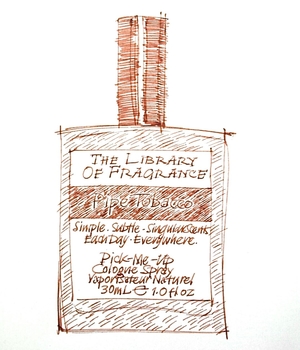 This is the first time I’ve reviewed a brand rather than a single perfume, and it may be the last, but there’s a reason for that. The Library of Fragrance describes its products as ‘Simple. Subtle. Singular Scents. Each Day. Everywhere’, and I wouldn’t quibble with any of that, other than the word ‘subtle’, which not all of the fragrances can really claim to be.
This is the first time I’ve reviewed a brand rather than a single perfume, and it may be the last, but there’s a reason for that. The Library of Fragrance describes its products as ‘Simple. Subtle. Singular Scents. Each Day. Everywhere’, and I wouldn’t quibble with any of that, other than the word ‘subtle’, which not all of the fragrances can really claim to be.
There are over 300 scents to choose from in the full range, and most of them are based on a single idea, from Apple Pie to Wet Garden. They’re cheap, cheerful and, above all, intended to be fun: something to spritz with or spray into the air for a quick hit, whether it’s as conceptual as Moonbeam, as simple as Mango or as playful as Play-Doh or Paperback.
I like them a lot, since they’re a reminder that perfume can be silly and fun as well as sexy and sophisticated (and occasionally pretentious and pestilential). They’re a great introduction to the world of fragrance, especially for anyone who can’t afford to spend £80 a time, and some of the conceptual scents are genuinely interesting – Dirt is deservedly popular, as is Snow and Thunderstorm.
Given their price compared with the stratospheric cost of top-quality raw materials, I wouldn’t necessarily recommend their takes on so-called ‘naturals’ like Neroli or Iris, but The Fragrance Library makes no great claims for its ingredients, unlike some brands that really should know better. The bottles are small (30ml or 1 fluid ounce) and the perfume concentration is low, between 2% and 8%, which in industry jargon counts as a ‘cologne spray’, but then in the UK they currently sell at just £15 a time. Part of the range can now be found in larger branches of Boots, which I think is great, and the rest is available online.
Some of the scents I’ve mentioned may sound familiar, and that’s because they used to be available in the UK under the Demeter brand, which was founded in Pennsylvania in 1994 by the maverick perfumer Christopher Brosius, who’d previously worked for Kiehl’s. Demeter’s early fragrances included Tomato, Dirt and Grass, and the brand quickly gained a cult following, in Britain as well as the USA, but management disagreements led to Brosius leaving in 2004 to set up on his own as CB I Hate Perfume. Demeter is still going strong in the USA, but because of trademark restrictions it can’t use the Demeter brand name in Europe– thus The Library of Fragrance. Start exploring it here.
Bulgari
Black
10 July, 2015
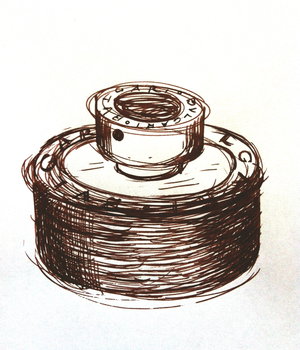 One of the problems with perfume is that there are far too many to choose from. Every year brings more new launches than the year before, and every year the choice becomes more bewildering.
One of the problems with perfume is that there are far too many to choose from. Every year brings more new launches than the year before, and every year the choice becomes more bewildering.
Yet look (or rather smell) more carefully and it soon becomes clear that the vast majority of scents smell boringly similar to each other. Perfume companies on the whole like to play it safe, since it costs a lot of money to launch a new one and failure can be very costly.
So you can bet your bottom dollar that the minute a new fragrance starts to sell really well, a hundred imitations will start appearing on the shelves. Of course it could all be coincidence, or something in the air, but it’s amazing how many perfumes smell virtually identical, even when their branding and their marketing is poles apart. (Want to do a little experiment? OK, follow my friend Roja Dove’s suggestion and try comparing Angel Men with Bleu de Chanel…)
Yet once in a while a really new fragrance does come along, something that stands out from the crowd. Some of them go on to become best-sellers; others don’t. Some of them are crowd-pleasers. Others are wonderful but weird. And few are weirder or more wonderful than Bulgari Black.
Launched in 1998, this was Bulgari’s first perfume for men. It was created by a very talented perfumer called Annick Menardo, who works for the multinational fragrance company, IFF. Now, I’m not a great believer in that tired old cliché that scents can transport you instantly back to a specific moment in your childhood or the like, but the first time I smelled Bulgari Black that’s exactly what happened to me.
I wasn’t transported back to my mother’s knee, though, or to the smell of laundry on a winter’s day. Bulgari Black took me somewhere far more interesting: to the toxic but weirdly sexy 1970s smell that greeted you when you opened the door of a car that had been sitting for too long in the summer sun – of hot PVC, of black plastic car seats that stuck to your legs when you got in.
I think it’s an amazing perfume: the olfactory equivalent of a Helmut Newton photo-shoot, simultaneously erotic and slightly repellent, though I’m still not sure I could actually wear it. But for anyone who loves fast cars and the smell of burning tyres then maybe this is the perfume for you.
You must remember this
5 July, 2015
Do men and women smell perfumes differently? Of course they don’t. But the other day it struck me that many – and maybe most – men have a different relationship to perfume than women do, which affects the way they approach the whole subject.
One of the many clichés about perfume is the story, which gets recycled again and again, of how the (inevitably female) writer’s earliest scent memories were of the perfume that her mother wore. It’s a plausible enough story, I suppose, but after I’d read it a few times alarm bells started to ring.
I don’t think I’m a particularly unusual kind of chap, yet though I love perfume I don’t have any of those kinds of memories. My mum probably did wear perfume when I was growing up, just as she does now (and she smells very nice), but I don’t remember it making any kind of impression on me. And as for my dad, like the vast majority of dads when I was growing up (and I suspect still today), if he smelled of anything it was Imperial Leather, not Jicky or Cuir de Russie.
In fact the first perfumes I remember trying were when I was in my later years at school, and my introduction to them was through friends of my own age. In other words I don’t have that long, intimate familial relationship with fragrance that many women seem to have, and I suspect that’s fairly typical among men. Yet when I mentioned this to a female acquaintance it came as a complete surprise to her, and you’d certainly never realise it from what you read in the press.
My guess is that this may be one of the reasons why so many men find choosing and buying perfume so mystifying: they haven’t had the practise women have, or anyone to guide them or compare notes with from an early age. But maybe it’s my own upbringing that was unusual. It’d be interesting to hear what your own experience was.
Caron
Pour un Homme
12 June, 2015
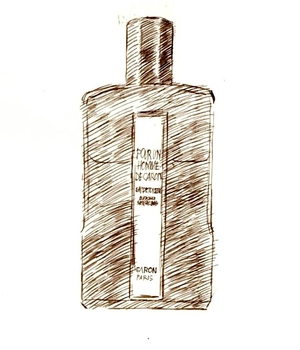 I’ve known about Caron’s Pour un Homme for many years – it’s often been hailed as one of the classics of men’s perfumery, and a couple of friends used to enthuse about it – but on the odd occasions when I’d tried it I couldn’t really see what there was to get so excited about. Despite its heritage it came in a cheap-looking bottle, and the testers I smelled did nothing much for me; to be honest I thought it was a bit dull.
I’ve known about Caron’s Pour un Homme for many years – it’s often been hailed as one of the classics of men’s perfumery, and a couple of friends used to enthuse about it – but on the odd occasions when I’d tried it I couldn’t really see what there was to get so excited about. Despite its heritage it came in a cheap-looking bottle, and the testers I smelled did nothing much for me; to be honest I thought it was a bit dull.
But then I got a new bottle, and either Richard Fraysse, Caron’s in-house perfumer, has smartened up the fragrance formula, or the scales have fallen from my eyes. The new bottle is certainly tidier than the old ones were: even my enthusiastic friends admitted that it looked like members of the Caron family had stuck the labels on, rather wonkily, by hand.
Actually the Carons haven’t been involved with Parfums Caron since the early 1900s, when Anne-Marie Caron sold her family perfume shop in the Rue de la Paix in Paris to the brothers Ernest and Raoul Daltroff. The brothers came from a cosmopolitan Russian Jewish family – their father ran a railway company in Saône et Loire – but for some reason they decided to get into perfume.
There doesn’t seem to be any record of Ernest training in perfumery, but he evidently had a natural talent, and he was helped, from 1906, by a one-time dressmaker called Félicie Wanpouille, who became what we’d now call the company’s creative director. Between them they developed a series of perfumes, with striking packaging and beautiful Baccarat bottles, and in 1911 they had their first big success with Narcisse Noir (still available but completely reformulated and apparently nothing like the original).
In 1919 came Tabac Blond, which for many contemporaries captured the spirit of the so-called Jazz Age, and more particularly to the outrageous young women who had taken to smoking cigarettes in public (again it’s still on the shelves, but the modern version smells nothing like the original, which was more like the wonderful and still untampered-with Knize Ten). Daltroff made Félicie Wanpouille co-owner of Caron in 1922.
Pour un Homme arrived in 1934, and has since established itself as one of the all-time fragrance classics. On the face of it it’s a simple enough smell: lavender, lavender and more lavender. But perfumes (at least good ones) are rarely as simple as they might seem, and Pour un Homme is no exception.
Like Guerlain’s ground-breaking Jicky from 1889, it mixes lavender with vanilla, but with very different results: sniffing them side by side is a good reminder of why a list of ingredients tells you very little about what a perfume will actually smell like. Jicky has a strange, sexy but disconcerting smell, which has sometimes been compared with cat wee, and it’s the (mostly synthetic) vanilla that you notice first.
Pour un Homme, by contrast, smells very like real lavender when you brush its leaves, and (to me at least) it’s got an almost minty cool freshness. It’s a while before you smell the vanilla – and actually if I didn’t know it was in there I’m not sure I’d have even noticed. Though the lavender smell stays for a long time, this extra touch of vanilla (plus some nice but unobtrusive musks) adds a gently comforting character, without being sweet or cloying in any way.
All in all I think Pour un Homme is a lovely fragrance, if not one that’s likely to get you noticed at a party; this is something I’d wear for myself rather than for other people.
As for its brilliant creator, Ernest Daltroff, he came to a rather sad end. Though he escaped the Nazi invasion of France in 1939, moving first to Canada and then New York, he was by this time in his seventies, frail and depressed, and he died just three years later.
Félicie Wanpouille continued running Caron until she retired in 1962, when she sold the company to Parfums Revillon. In 1967 the brand was bought by the American pharmaceuticals company AH Robins, which opened a flagship store on the Avenue Montaigne. In 1988 Caron was sold again, this time to a French hair-products and cosmetics group, whose owner, Patrick Alès, had long admired the brand. Today it’s run by Patrick’s son Romain. Long may it prosper.
Hermès
Cuir d’Ange
27 April, 2015
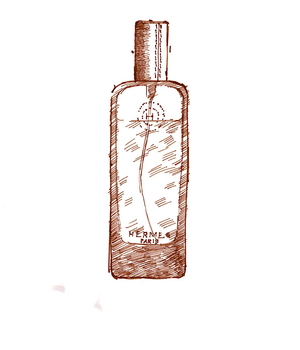 The latest addition to the Hermessences range, created by in-house perfumer Jean-Louis Ellena for Hermès and launched in 2014, Cuir d’Ange is, as its name suggests, a rather ethereal take on the smell of new leather – appropriately enough for a company that started out making riding tackle.
The latest addition to the Hermessences range, created by in-house perfumer Jean-Louis Ellena for Hermès and launched in 2014, Cuir d’Ange is, as its name suggests, a rather ethereal take on the smell of new leather – appropriately enough for a company that started out making riding tackle.
Inspired by a phrase in Jean le Bleu, a 1932 novel by Jean Giono – a kind of French Thomas Hardy – Ellena explains that, for Cuir d’Ange, ‘Using the smells that are my words, I wanted to write a poem to rekindle the love duet between leather and the skin. Its softness and lightness, its tension and its caress. Heliotropes and hawthorn, leather and musk.’
This particular leather smells slightly sweet and rather papery, a bit like skin, which I guess makes sense. I’d like it more if didn’t also include the faintly sweaty smell of hay, which reminds me of another Hermès fragrance, Narcisse Bleu (the hay smell coming from narcissus flowers), but like the other perfumes in the range it’s subtle and sophisticated if, arguably, a little too polite: smart without being particularly sexy. Which, when you come to think of it, makes it a perfect complement to an Hermès suit and tie. But oh for a touch of vulgarity!
Slugs and snails and puppy-dogs’ tails
23 April, 2015
A while back I attended a perfume training day with Roja Dove, perfumer extraordinaire in several senses of the word. A small group of us smelled something like a hundred different perfume ingredients, from bergamot to tuberose (the pure extract of which smells far more refined than any of the so-called ‘tuberose’ perfumes I’ve sampled).
Lots of surprises: extract of daffodil smells like hay; galbanum like freshly-podded peas. Fine lavender oil has an oddly sweaty side to it, which I think is one of the things I smell in Guerlain’s legendary Jicky. Roja brings in beaver glands, which gave us the wonderful leathery smell of castoreum (used in Chanel’s Cuir de Russie), and the greasy scrapings from the Ethiopian civet cat, which has the farmyard reek of fresh cow-pats but – in minute quantities – adds a disquieting hint of sex to any perfume in which it (or its synthetic equivalent) is used.
It was a fascinating and really useful day, though it must take daily practise to memorise so many ingredients. What surprised me, though, was the imprecision of perfume terminology. Particularly extracts come from very specific sources: galbanum, for example, derives from the roots of particular species of Iranian fennel (Ferrula gummosa and Ferrula rubricaulis), yet in our training day it was vaguely described as coming from ‘an umbellifer root’. Given that there are over 3,700 individual species in the umbellifer family (now renamed the Apiaceae), that wasn’t much help – cow-parsley is an umbellifer too, but I bet its roots don’t smell like fresh peas.
And as for daffodil smelling like hay, I wanted to know which daffodil: there are between 30 and 70 species of narcissus (the Latin term for daffodil) and hundreds and hundreds of varieties, many of which smell very different from each other.
It struck me as an odd contrast between how incredibly precise perfume chemists have to be, describing specific fragrances down to the molecular level, and yet how imprecise so much perfume terminology seems to be at the same time. If perfumers themselves use such vague descriptions, is it any wonder that we, the perfume-buying public, find the subject so confusing and so hard to understand?
Sock it to me
26 March, 2015
I was talking to a friend who has a fine turn of phrase, and she said something that made me think about why I wear perfume and what it means to me. ‘Perfume,’ she said, ‘it’s like new socks, isn’t it?’ And I know exactly what she means. Spritzing yourself with a favourite scent is just like wearing new socks or a new pair of trainers for the first time: it puts a bit of a spring in your step and sets you up for the day.
It also made me think about that old perfume cliché, the ‘signature scent’. Now, I’m all for finding a perfume that suits you and wearing it a lot, but it seems like such a shame to limit yourself to a single scent when there is such a rich and varied range of fragrances to choose from, old and new, relatively cheap and excruciatingly expensive. It’s nice to have a favourite shirt, of course, or a coat that always gets you compliments, but would you ever wear the same item of clothing every day, year in, year out? There are people out there, of course, who have a signature look, but let’s face it, they’re few and far between, and there’s a pretty good reason for that.
One of the joys of fashion is that all dressing, in the end, is about dressing up, and that means dressing for an occasion – whether it’s a party or a rainy day in June, a bitter winter’s day or the first warm week of spring. It’s fun to try new things on, and that’s precisely how I think of perfume too. There are perfumes for happy days and melancholy days, for summer days and winter days, for dates and dinner parties, for a nightclub or the opera. So why reduce your life to a single choice, when the world offers so many exciting possibilities?
Ramón Monegal
Dry Wood
2 March, 2015
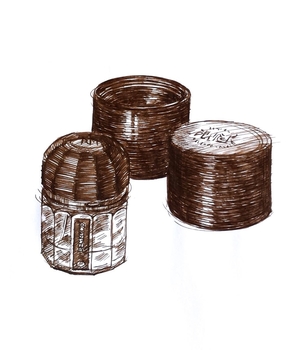 The world of perfume is full of great stories – some of them true, others completely bogus or quietly tweaked by fiendish marketeers. The story of Ramón Monegal is one of the better ones, and it’s also more interesting than most. The nice thing is that it has a happy ending too.
The world of perfume is full of great stories – some of them true, others completely bogus or quietly tweaked by fiendish marketeers. The story of Ramón Monegal is one of the better ones, and it’s also more interesting than most. The nice thing is that it has a happy ending too.
Monegal’s great-grandfather founded Myrurgia, which during the twentieth century became the best-known perfume brand in Spain. Ramón joined the business in 1972, training at Firmenich in Geneva and in Paris with the famous perfumer Pierre Bourdon (creator of Davidoff’s Cool Water and Serge Lutens’ Feminité du Bois).
Ramón created his first perfume for Myrurgia in 1979, but he also went on to develop scents for other brands, from Adolfo Dominguez to Inès de la Fressange. He eventually became vice-president of the family company, but in 2000 it was sold to Puig, the giant Barcelona-based fragrance-and-fashion group, which owns everything from Jean-Paul Gaultier to Penhaligon’s and L’Artisan Parfumeur.
The transition from owner to employee is surely always a difficult one, and though Monegal was appointed development director for the group’s fragrance brands, it must have hurt when, in 2007, Puig closed Myrurgia down. Monegal left the same year, but in 2010 he launched his own brand, and in 2014 he made a remarkable comeback by releasing fourteen new fragrances in one go. All the ones I’ve smelled so far are interesting and unusual, and Dry Wood is no exception.
It’s been described as a ‘sharp sandalwood’, but it also reminds me of a top-quality men’s aftershave from the 1970s, with hints of cedar and pine as well as sandalwood; if you remember the old ‘things happen after a Badedas bath’ adverts you’ll know the kind of thing I mean. It has great staying-power, and after a while smells woodier than it does to start with, though still with a touch of pine and turpentine.
Like all the perfumes in the range, Dry Wood comes in attractively luxurious packaging, also designed by Monegal. The chunky twelve-sided ‘inkwell’ bottles, with their flip-up black domed caps, are apparently inspired by his love of literature, and are contained in black Bakelite tubes, which screw closed in a very satisfying way. Perhaps it’s not surprising that these perfumes are expensive, at £130 for just 50ml (or $160 in the States).
The only problem at the moment is buying them: currently they’re only available from Harrods in the UK or Nieman Marcus in the US, which means they’re not going to get as wide an exposure as I think they deserve. Still, they’re well worth tracking down if you have the dedication (and the cash).